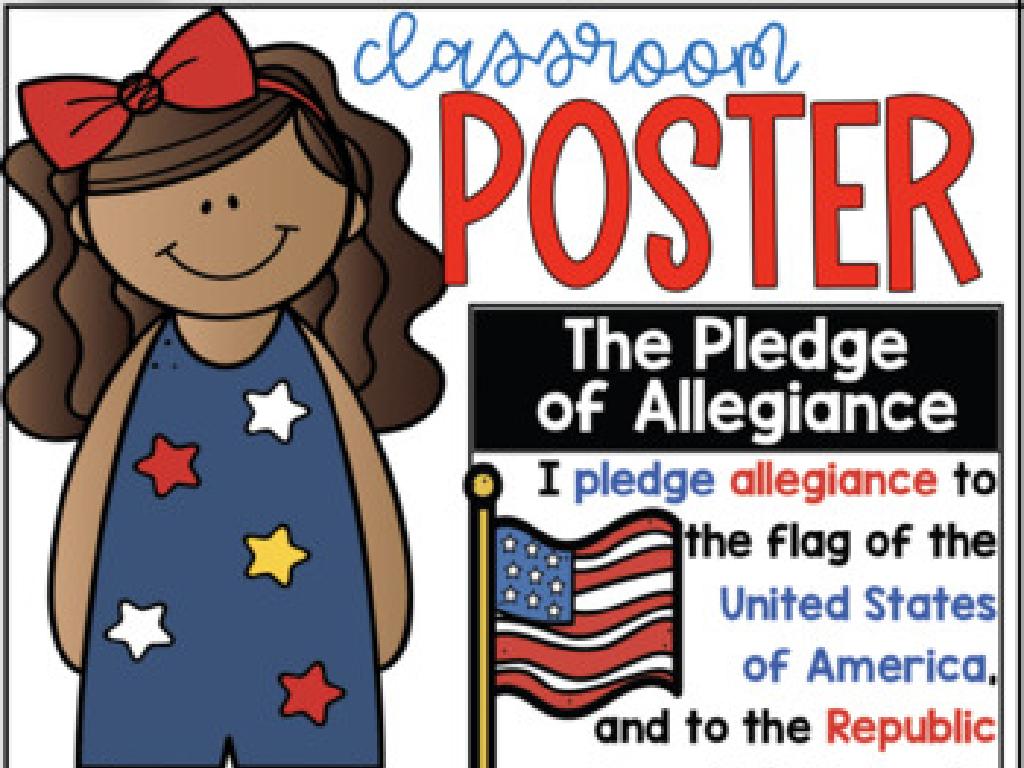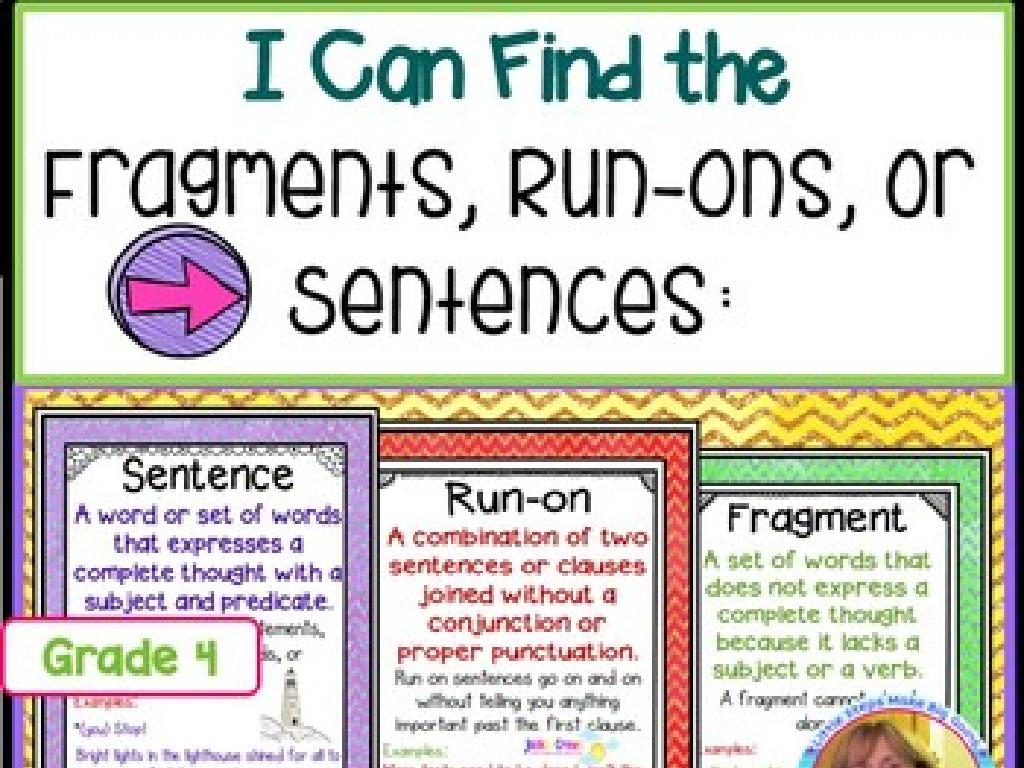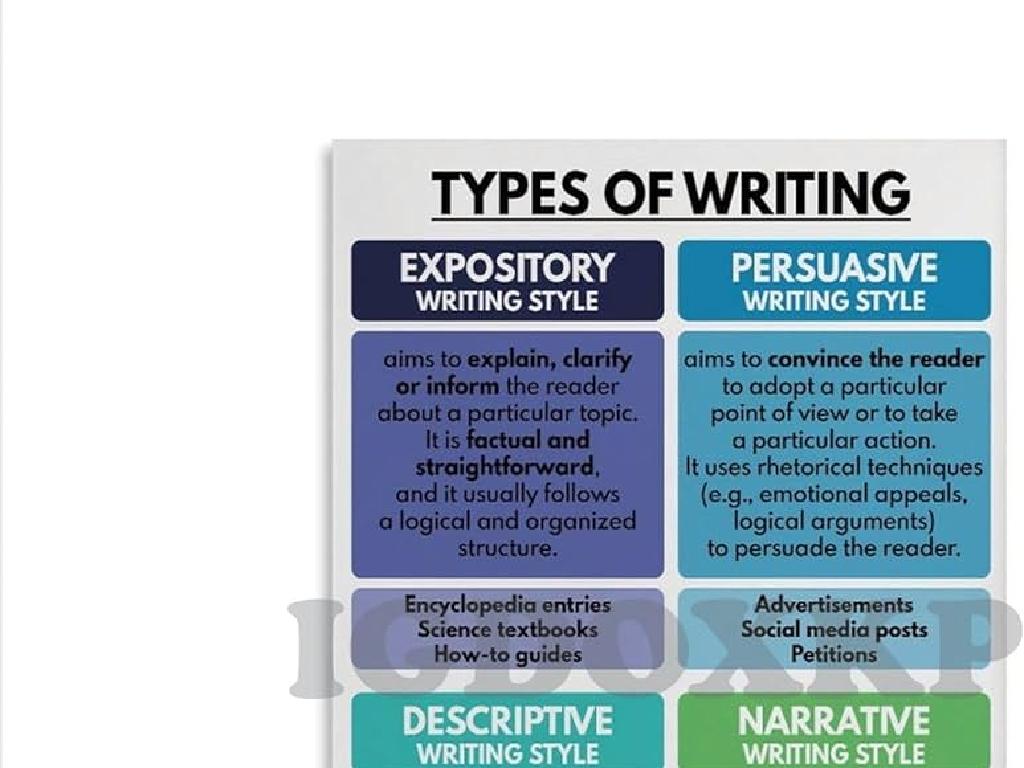Sort Objects By Two-Dimensional Shape
Subject: Science
Grade: First grade
Topic: Shapes And Colors
Please LOG IN to download the presentation. Access is available to registered users only.
View More Content
Welcome to Shapes!
– Greet the class with enthusiasm
– Discover shapes in our world
– Shapes are everywhere! Like squares in windows and circles in clocks.
– Learn sorting by shape
– We’ll group things that have the same shape together.
– Fun shape sorting activities
– Get ready to play some sorting games with objects!
|
Begin the class with a warm welcome to set a positive tone for the lesson. Introduce the concept of shapes by pointing out familiar objects in the classroom or from their daily life that have different shapes. Explain that sorting is a way of organizing objects based on their similarities, in this case, their shape. Engage the students with hands-on activities where they can physically sort objects like blocks, cutouts, or images into groups based on their shapes such as circles, squares, triangles, and rectangles. This will help them understand the concept of sorting and recognize shapes in a fun and interactive way. Prepare a variety of shape examples and sorting games to cater to different learning styles.
Exploring Two-Dimensional Shapes
– Shapes are everywhere we look!
– A shape shows an object’s form
– Outline or boundary of an object
– Examples of 2D shapes
– Circles, squares, triangles on paper
– Recognizing shapes in our world
– Find shapes in the classroom
|
This slide introduces the concept of shapes to first graders, emphasizing that shapes form the boundary of objects and are found everywhere in our environment. Begin by explaining what a shape is and then show various examples of two-dimensional shapes such as circles, squares, and triangles. Use simple, relatable examples like a drawing on paper or shapes that can be found in the classroom. Encourage the students to observe and recognize these shapes in objects around them, fostering their ability to categorize and sort objects based on their shapes.
Meet the Shapes: Circle, Square, Triangle, Rectangle!
– Circle: A round shape
– Like a clock or a coin
– Square: Four equal sides
– Like a checkerboard or a dice
– Triangle: Three-sided shape
– Like a slice of pizza or a pyramid
– Rectangle: Four-sided shape
– Like a door or a book
|
This slide introduces basic two-dimensional shapes to first-grade students, making connections to familiar objects to help them identify and sort these shapes. A circle is a round shape with no corners, similar to the face of a clock. A square has four sides of equal length, like the squares on a checkerboard. A triangle has three edges and can resemble a slice of pizza. Lastly, a rectangle also has four sides but with opposite sides being equal, akin to the shape of a door. Encourage students to find and bring examples of these shapes from their environment to the next class for a hands-on sorting activity.
Sorting Shapes by Sides
– What does sorting mean?
– Sorting is grouping things that are alike.
– Sort by number of sides
– Shapes with 3 sides are triangles, 4 sides are squares or rectangles.
– Let’s sort shapes together!
– We’ll use toys and pictures to sort shapes.
|
This slide introduces the concept of sorting, which is a fundamental skill in science and mathematics. Explain to the students that sorting is like organizing things into different groups. Show them how to sort shapes by the number of sides they have, such as triangles, squares, and rectangles. Use tangible objects like blocks or cutouts to help them visualize and physically sort the shapes. This activity will help develop their observational skills and their ability to categorize objects. Prepare a set of diverse objects and pictures that can be sorted into groups based on the number of sides for an interactive class activity.
Shape Sorting Game
– Time to sort shapes yourself!
– Play a game: drag shapes to boxes
– Find the shape box that matches the object
– Match objects to the right shape
– Circles, squares, triangles have unique boxes
– Count the sides to sort correctly
– A square goes into the box with 4 sides
|
This interactive activity is designed to help first graders recognize and sort two-dimensional shapes. Set up a digital or physical game where students can drag and drop various objects into boxes labeled with different shapes such as circles, squares, and triangles. Remind them to count the sides of the shapes to ensure they’re placing the objects in the correct box. For example, a triangle should be placed in the box with three sides. This activity reinforces their understanding of shapes and their attributes. Provide a variety of objects to sort and consider pairing students to encourage collaboration. After the activity, discuss which objects were easy or difficult to sort and why.
Shapes in Our World
– Shapes are all around us
– Find shapes in the classroom
– Look for a circle, square, triangle, and rectangle around you
– Recognize circle, square, triangle, rectangle
– Circle: clock, Square: window, Triangle: yield sign, Rectangle: door
– Let’s go on a shape walk
|
This slide is designed to help first graders recognize that shapes are not just concepts to be learned in the classroom, but are present in many objects in their everyday environment. Encourage the students to observe their surroundings and identify common shapes. For the shape walk, guide them around the classroom or school to find real-life examples of each shape. This activity will help them connect the abstract concept of shapes to tangible items, enhancing their understanding and retention. Be prepared with a list of objects that represent each shape in case students need assistance during the shape walk.
Class Activity: Shape Hunt
– Let’s go on a shape hunt!
– Find objects matching shapes
– Look for circles, squares, triangles
– Draw the shapes you find
– Use your paper to draw them
– Share your drawings with class
|
This activity is designed to help students recognize and sort objects based on their two-dimensional shapes. Encourage the students to explore the classroom and identify everyday items that correspond to basic geometric shapes like circles, squares, and triangles. Provide drawing materials and assist them in sketching the shapes they find. Once everyone has completed their drawings, organize a show-and-tell session where each student presents their findings, discussing the shapes they discovered. This will reinforce their understanding of shapes and also improve their communication skills. Possible variations of the activity could include a shape scavenger hunt outside the classroom, creating a collage of cut-out shapes, or grouping objects by shape.
Review and Goodbye: Shape Sorting Recap
– Excellent work with shapes today!
– Shapes are all around us.
– Look at buildings, signs, and objects at home.
– Keep observing shapes everywhere.
– Excited to see you next time!
– We’ll have even more activities on shapes!
|
This slide is meant to conclude the lesson on sorting two-dimensional shapes. It’s important to praise the students for their efforts and participation. Reinforce the concept that shapes are a fundamental part of their environment by encouraging them to observe and identify shapes in their daily lives. This will help solidify their understanding and recognition of shapes. Anticipate the next lesson with enthusiasm to maintain their interest. As a follow-up activity, you could ask students to bring to class an example of a shape they found at home or outside, which will be discussed in the next session.





